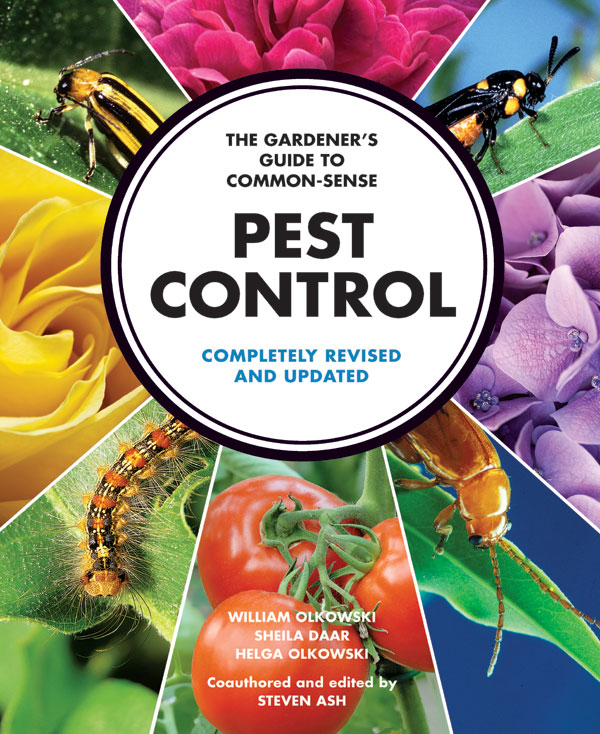

Chapter 10: Meet the Weeds
Allan, Mea. 1978. Weeds-the Unbidden Guests in Our Gardens. New York: Viking Press. 191 pp. This work illustrates and describes over 200 common weeds of Britain and North America and includes discussions of how they migrate, why many immigrant plants are considered undesirable and why other weeds can be very useful.
Cocannouer, J.A. 1964. Weeds: Guardians of the Soil. New York: Devin-Adair. 179 pp. Described by the publisher as “probably the first book ever written in praise of weeds,” this folksy volume relates in anecdotal style observations of the positive roles weeds play in improving soils. The book, written by one of the first professors of conservation and botany at the University of Oklahoma, is based on several decades of study of weed behavior. While some observations about the benefits of weeds-for example, how certain weeds can make minerals available to shallow-rooted plants-have since been verified by contemporary researchers, Cocannouer presents little of his own data. Thus, the wisdom in this book too often must be taken as an article of faith rather than documented fact.
DiTomaso, J.M. and E.A. Healy. 2007. Weeds of California and Other Western States, Volumes 1 & 2. Richmond, California: University of California Agricultural and Natural Resources Communication Services. Volume 1: 834 pp., Volume 2: 974 pp.
Fischer, B.B, A.H. Lange, J. McCaskill, B. Crampton, and B. Tabraham. 1978. Grower’s Weed Identification Handbook. Oakland: University of California Cooperative Extension (Publication 4030). 250 pp. The excellent color photographs of the seed, seedling and flowering stage of each of more than 240 weed species, together with pertinent biology and ecology, make this handbook a classic weed identification tool. The handbook is no longer published by UC-ANR but is available online at Amazon and other sources. This is a book you should consider adding to your library if the price is affordable.
Harrington, H.D., and L.W. Durrell. 1957. How to Identify Plants. Chicago: Swallow Press. 203 pp. This very well written book takes the mystery out of botanical nomenclature. It includes a list of keys to plants in various regions of the United States.
Ingels, C.A., R.L. Bugg, G.T. McGourty, and L.P. Christensen. 1998. Cover Cropping in Vineyards, A Grower’s Handbook. Oakland, California: University of California Agricultural and Natural Resources Communication Services. 162 pp.
Isely, D. 1960. Weed Identification and Control. Ames: Iowa State University Press. 400 pp. An excellent key to the common weeds of the United States. This title is out of print. If you find a used copy, scoop it up if the price is right.
King, L.J. 1966. Weeds of the World. New York: Interscience Publishers. 526 pp. One of the most thoroughly researched discussions ever written of the origin, botany, spread, and control of agricultural weeds. Includes a good chapter on non-chemical methods for control of weeds (with an excellent bibliography).
Klingman, G.C., F.M. Ashton, and L.J. Noordhoff. 1975. Weed Science: Principles and Practices. New York: John Wiley and Sons. 431 pp. A standard weed control text with descriptions of various chemical classes of herbicides.
McClure, S., and S. Roth. 1994. Rodale’s Successful Organic Gardening: Companion Planting. Emmaus, Pennsylvania: Rodale Press. 160 pp.
Miller, P.R., W.L. Graves, and W.A. Williams. 1989. Covercrops for California Agriculture, Publication #21471. Richmond, California: University of California Agricultural and Natural Resources Communication Services. 24 pp.
Muenscher, W.C. 1980. Weeds. Ithaca, N.Y.: Cornell University Press. 586 pp. An excellent reference tool for identifying weeds. It contains a key and descriptions for over 570 weeds found throughout the United States and Canada. Control information is limited to mechanical methods.
Nicolson, P., ed. 1983. Vita Sackville-West’s Garden Book. New York: Atheneum. 250 pp. This book is composed of garden columns written by Sackville-West in the London Observer from 1951 to 1958 chronicling her experience in her garden at Sissinghurst Castle, as well as her observations about other gardens and plants. She cautions against indiscriminate weed removal, since this eliminates survival of migrant seedlings such as the Cotoneaster horizontalis seedlings that improved the appearance of her garden in unexpected ways.
Stein, B. 1988. My Weeds: A Gardener’s Botany. New York: Harper and Row. 229 pp. This delightful book, written by a botanist and gardener, spells out the history and ecological underpinnings of common weeds and describes how to design and manage gardens to minimize weed problems.
Subcommittee on Standardization of Common and Botanical Names of Weeds. 2010. Composite list of weeds. 112 pp. (Available from the Weed Science Society of America website at http://www.wssa.net/index.htm.) A very useful list of the most recent scientific names assigned to common weeds.
USDA Soil Conservation Service. 1981. Cover crops in California Orchards and Vineyards. 25 pp. (Available from: Publications, USDA Soil Conservation Service, 2828 Chiles Rd., Davis, CA 95616.) Practical tips on how to select, plant and manage cover crops in orchards and vineyards. This title is out of print. If you find a used copy, buy it if the price is right.
Whitson, T.D., L.C. Burrill, S.A. Dewey, D.W. Cudney, B.E. Nelson, R.D. Lee, and R. Parker. 2000. Weeds of the West, 9th Edition. Newark, California: Western Society of Weed Science. 628 pp.

















Comments
Log in or create an account to post a comment.
Sign up Log in